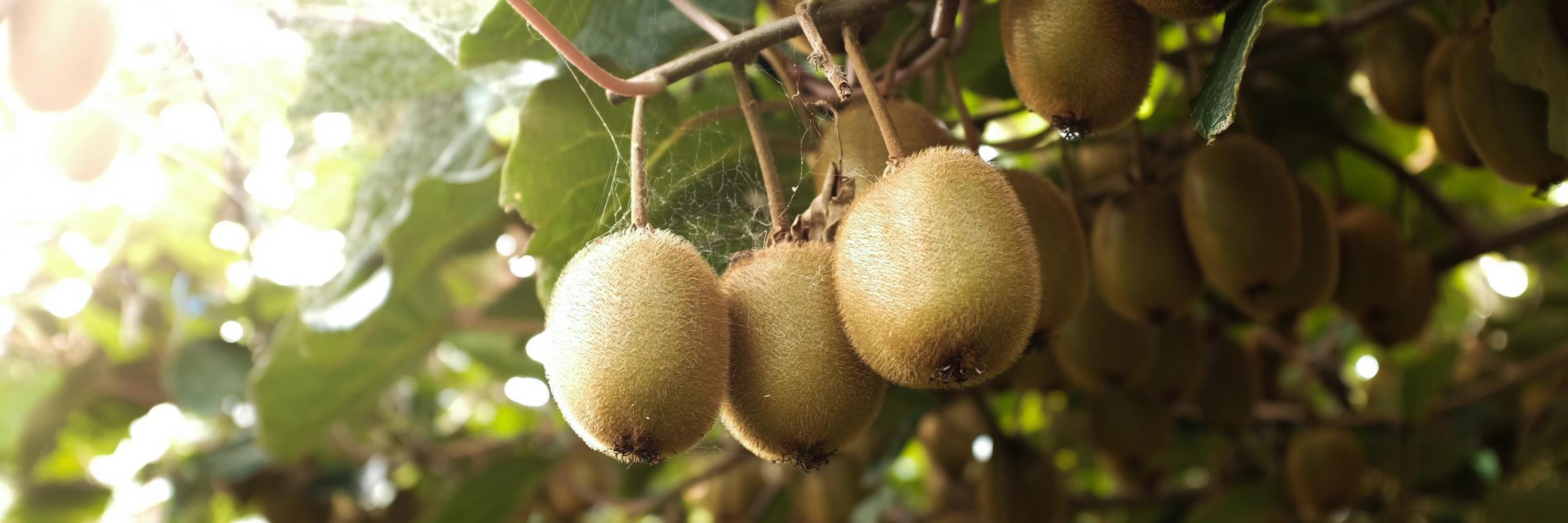
How do you grow healthy kiwis
Kiwifruit vines grow best on deep, alluvial soils.
They prefer loamy and silt-loamy soils rather than loamy sands. These vines require low-salt water as do many other fruit crops.
Mineral nutrition
Safe levels for irrigation water include chloride less than 70 ppm, bicarbonate less than 200 ppm, sodium less than 50 ppm. Furthermore, the pH should not exceed 7.3.
Nitrogen (N) and potassium (K) are the most important elements required by kiwifruit in relatively large quantities in intensive orchards. Nitrogen participates in vine and leaf development, favoring photosynthesis. In a single season, the nitrogen required by the vine is estimated to be approximately 125 kg. ha 1. In order to limit the leaching of nitrogen, it must be applied close to bud break.
Potassium is essential for rapid canopy development from bud break to fruit set and it is needed for transport functions and to control water exchanges. Low potassium levels result in poor fruit growth, and older leaves fall later in the season. On average, 220 kg K2O.ha-1 are usually required in modern cropping systems. The sulfate form, which is less sensitive to leaching, is preferable.
Leaf analysis is recommended in order to monitor the mineral nutrition. Calcium and magnesium are also important nutrients, but a large part is recycled in pruning. Sulfur is a major element that is often provided by fertilizers in sulfate form. As regards trace elements, kiwifruit mainly needs iron, zinc, manganese and boron.
Potassium is the key nutrient
The first sign of a potassium deficiency is a poor growth at bud break. On severely affected vines, the leaves are small and pale-yellow green with a slight marginal chlorosis on the older leaves.
As the deficiency becomes more pronounced, there is an upward curling of the margins of the older leaves, particularly during the warmer period. This symptom can easily be confused with a lack of water. At a later stage, the margin of the affected leaves remains permanently curled and the tissue between the minor veins is often ridged upwards. The light green chlorosis, which would have developed initially at the leaf margin, spreads between the veins towards the midrib. In doing so, it leaves a zone of green tissue close to the major veins and at the base of the leaf.
Potassium sulfate for quality
Kiwifruit is not a particularly chloride-sensitive crop, although chloride can affect the leaves in commercial orchards. Nevertheless, in many cropping conditions, potassium sulfate improves the quality of fruits. In the following example, which comes from an experiment carried out in Te Puke, New Zealand, which is the world's main production area for kiwifruit, two potassium forms (SOP and MOP) and two doses (150 and 350 kg K20.ha-1) as well as a mixture 1:1 of SOP and MOP at the higher dose, were compared.